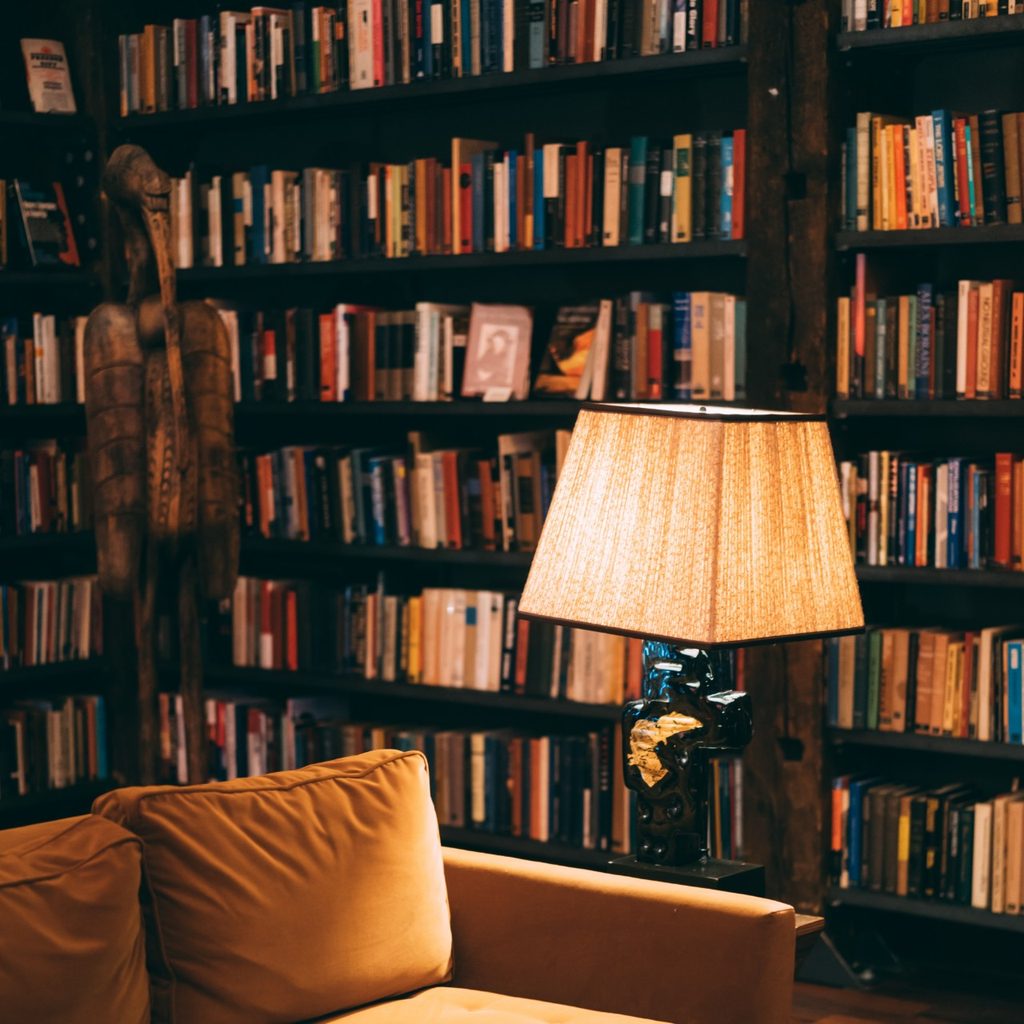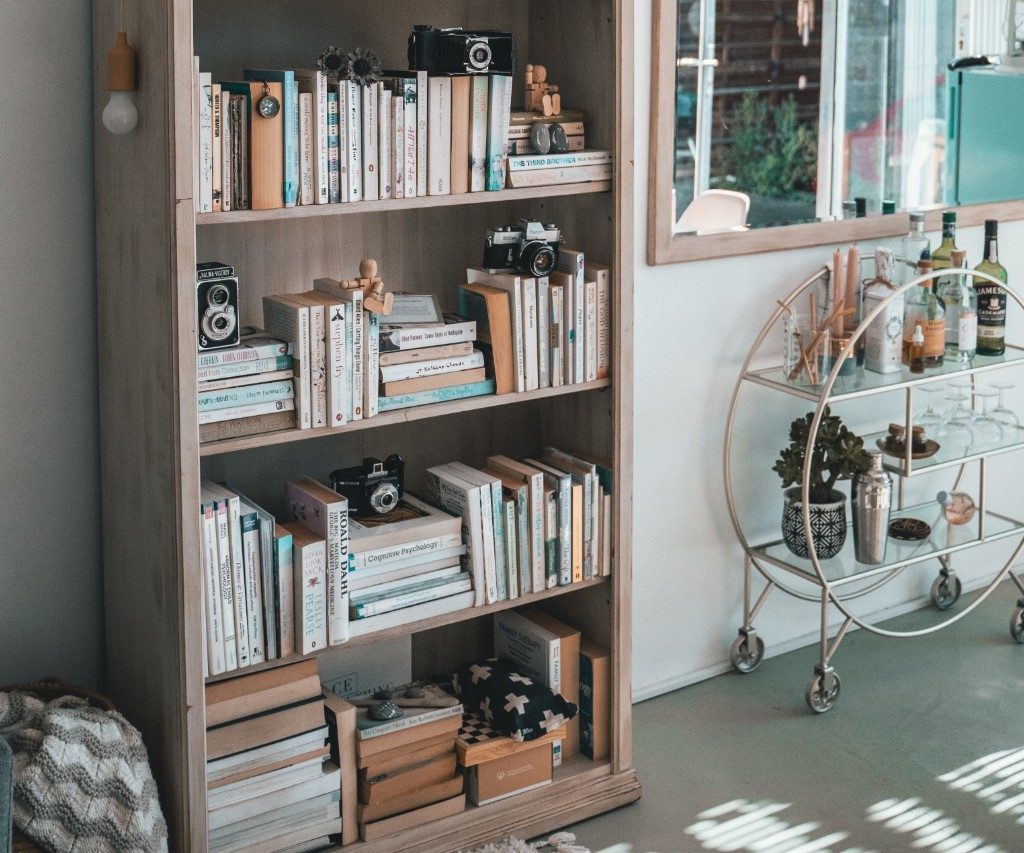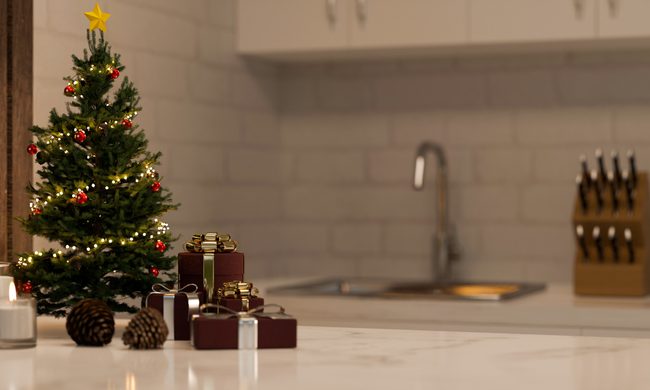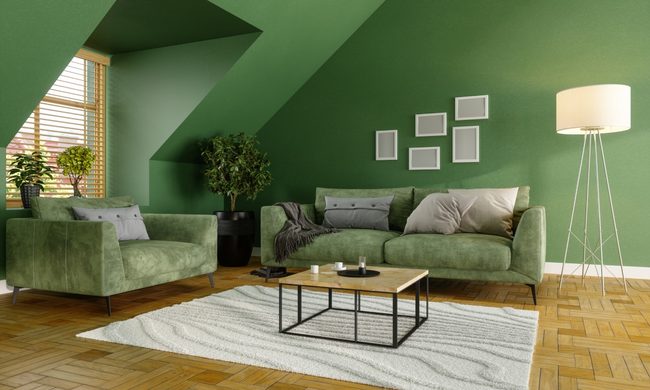Each book you collect is a wonderful memory of your favorite stories or subjects. Some books you collect cause anticipation because you can’t wait to read them. No matter what the reason is for your book collection, you have to store them somewhere.
Instead of shoving books into whatever spaces you can find, take this time to honor your collection with some creative organization so you can display your treasures proudly. This will help you find specific books more easily and create a visually pleasing focal point in your room.
These creative organization ideas will teach you how to organize books in a way that makes sense for your collection and never sacrifices style. Here’s what you need to know to go beyond alphabetical organization.

Separate by kind
Storing hardbacks and paperbacks together can be a hassle because of size differences. The simple act of separating these two basic types can be a game-changer for your shelves.
Put hardbacks on shelves with more space, allowing them to stand tall or stack together in eye-catching rows. Your paperbacks can go on smaller shelves either between hardback shelves or on their own shelf.
This method is useful if you have an equal mix of both types. However, if you have an overwhelming number of one specific kind of book, you can use the smaller number (i.e., your 10 paperback books) as bookends.
By color
This is an eye-catching way to organize books. Separate them by the color on the spine and group like colors together to create a cohesive design scheme that photographs well.
This organization method is excellent if you’re a visual person — seeing a book’s cover in your mind’s eye can help you remember the color. It’s aesthetically pleasing and can create a good flow if you have a jumble of different types of books.
Color is also an excellent way to display your attractive book covers, prioritizing blocks of beautiful color. Use one shelf for a rainbow effect and another shelf to alternate black and white. However you arrange the colors, your shelves will look cohesive and beautiful.
By size
Another highly visual way to arrange shelves is to play with the size of the books. Start with the tallest books at the end of the row and arrange in descending size until the smallest books are in the middle.
You can also create waves by using the book’s size to create an undulation across the shelf. This highly sculptural arrangement can allow space for other things on the shelf, such as plants or other mementos.
If you have a good variety of book sizes, this could be one way to wrangle your collection and create a visual effect. If you have a lot of books of similar size, you can still play with the shapes by laying some books on their sides and keeping others upright.
By genre
If you’d like to alphabetize, but the thought of going through every book in your collection doesn’t sound like fun, group them by genre first, suggests HGTV. You can organize by name within the categories and create mini sections, just like in a bookstore.
This helps you find books when you can’t remember the title or the author, but you know the category of the story. It also makes it more fun if you’re recommending books to others, and they have a specific preference.
This method is ideal for someone with a wide range of book types. Chunking together by genre helps with display and gives you options for storing similar books, authors, or a series together. You can even combine it with some of the other organization styles on the list to create a dual layer.
By reading status
You have a lot of books you haven’t read yet, and we see you. With an extensive collection of unread books, you can place them together to remind you of your pending and current reading list.
Books you’ve already read go together using one of the organization methods above or even simple alphabetizing. Your unread books get grouped, too. The trick here is to place unread books somewhere full view, so you’re always encouraged to read them.
If you don’t have a large collection of unread books, you can still highlight them by placing them in one particular spot on their own. Use your floating shelf in your bedroom, for example, or even stack them neatly with a lovely plant on your coffee table — not out of sight and definitely not out of mind.
By person
If you have kids in the house, placing all their children’s books within easy reach could encourage reading. Store your significant other’s extensive collection of nonfiction on its own set of shelves. Put your limited edition photography books up high where you can see them protected from dust and wandering fingers.
Separating by person gives everyone the chance to find the books he or she knows and loves. You’ll ensure no one touches or moves your favorite book and you’ll provide the same consideration to the other people in your life.
Use baskets and storage boxes
If your bookshelves are doing double duty for other storage, too, a good set of organization tools is necessary. You can arrange your books using one of the methods above and hide papers, electronics, toys, and any other items behind uniform containers.
Use magazine files to help wrangle your favorite magazines and old tax returns. Baskets on bottom shelves allow others to find toys or phone chargers. You can even use these items as makeshift bookends to keep everything in place.

The art of bookshelf organizing
If you aren’t sure how to organize a bookshelf, there are many ways and a lot of inspiration out there. The most important thing is that your books are available to enjoy no matter where you are. It’s time to transform your bookshelves.



